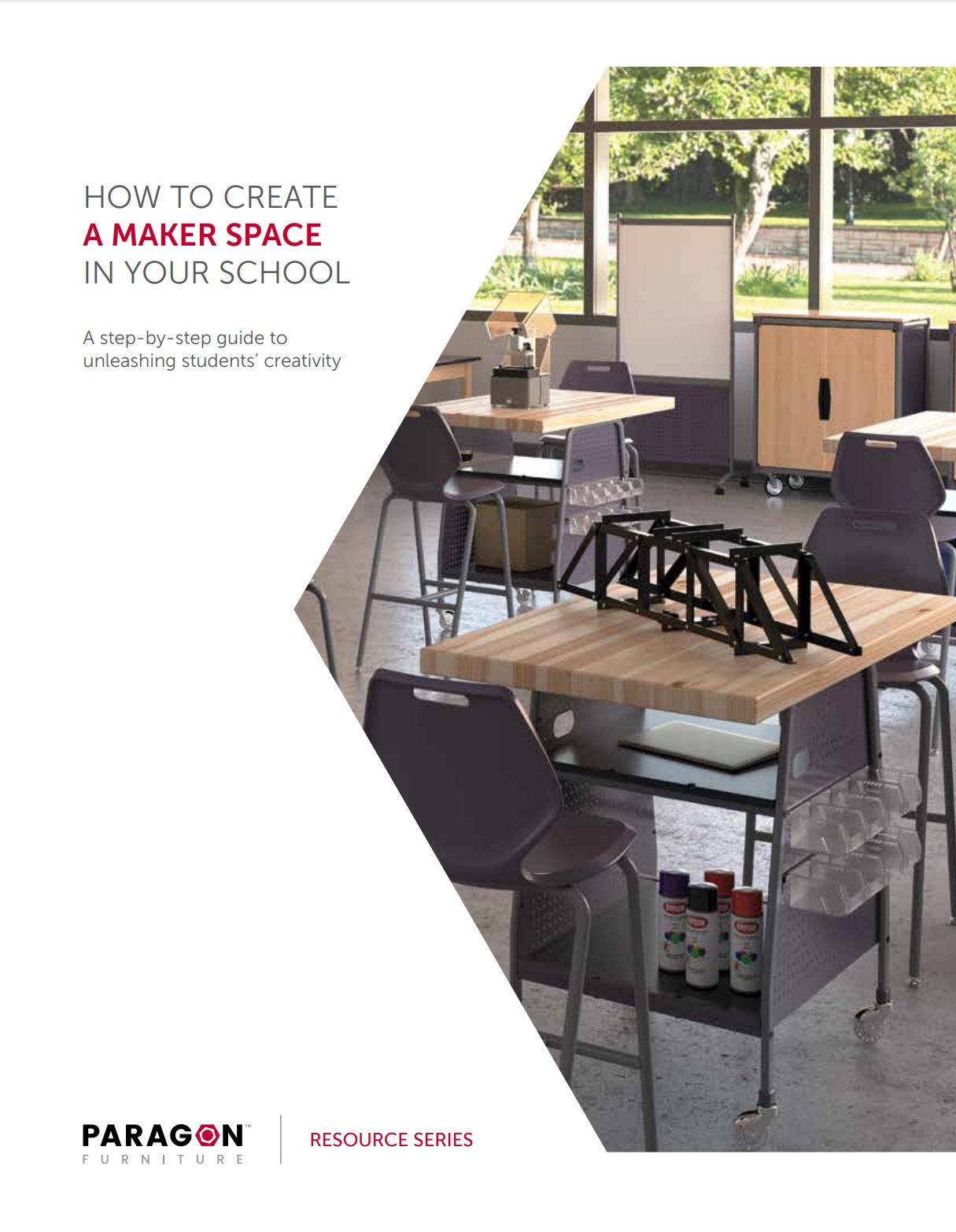THE IMPORTANCE OF FLEXIBLE FURNITURE IN MAKERSPACES
THE TOP 4 REASONS WHY FLEXIBLE FURNITURE CAN HELP YOU CREATE A SUCCESSFUL MAKERSPACE
Makerspaces have become increasingly popular in recent years as a place for individuals to engage in hands-on, creative projects, collaborate with others, and experiment with new technologies. These spaces often feature tools and equipment such as 3D printers, laser cutters, and woodworking tools, but it is easy to overlook the importance of flexible furniture in making these spaces function properly & effectively.
The Proper Space for Different Projects & Skill Sets
Makerspaces are often used by people with diverse interests and skills. Some may be working on large-scale projects that require a lot of space, while others may need to work on smaller, more intricate projects. To accommodate these varying needs, makerspaces require furniture that can be easily moved around and reconfigured as needed. Flexible furniture such as mobile tables, adjustable workstations, and modular seating allow for quick changes in layout and can help to maximize the available space.
Create Distinct Zones & Dedicated Areas
There are also a wide range of activities, from coding and electronics to art and design that take place in makerspaces. Flexible furniture can help to create distinct zones within the space, with designated areas for specific activities. For example, a comfortable seating area with soft furnishings may be ideal for quiet brainstorming, while a large table with plenty of workspace may be better suited for more collaborative projects. By using furniture to create different zones, makerspaces can be optimized for a wide range of activities and can accommodate the needs of many different users.
Accommodate the Needs of Different Ages & Abilities
In order to appeal to the needs of all students, makerspaces should be able to be used by people of different ages and physical abilities. This means that furniture needs to be accessible and adaptable to different needs. For example, adjustable workstations that can be raised or lowered can accommodate users of different heights, while chairs with ergonomic features can help to reduce strain and injury. Flexible furniture can also be designed with mobility in mind, with features such as lockable casters that allow for easy movement around the space.
Dynamic & Constantly Able to Evolve
Finally, makerspaces are often dynamic environments that are constantly evolving. As new tools and technologies become available, the layout and furniture of the space may need to be adapted to accommodate them. Flexible furniture can help to future-proof makerspaces, allowing them to adapt to changing needs over time. By using modular, customizable furniture, makerspaces can be quickly and easily reconfigured to meet the needs of different projects and users.
Makerspaces need flexible furniture to function properly because they are dynamic, diverse spaces that require adaptable and accessible furnishings. By using furniture to create distinct zones, accommodate different needs and abilities, and future-proof the space, makerspaces can be optimized for a wide range of activities and users. As makerspaces continue to evolve and expand, it is important to prioritize the importance of flexible furniture in creating a functional and accessible space for all.
Download our step-by-step implementation guide to help create active maker spaces in your school!
CLASSROOM DESIGN FILES
Access all of the design resources you need to create a beautiful classroom!
